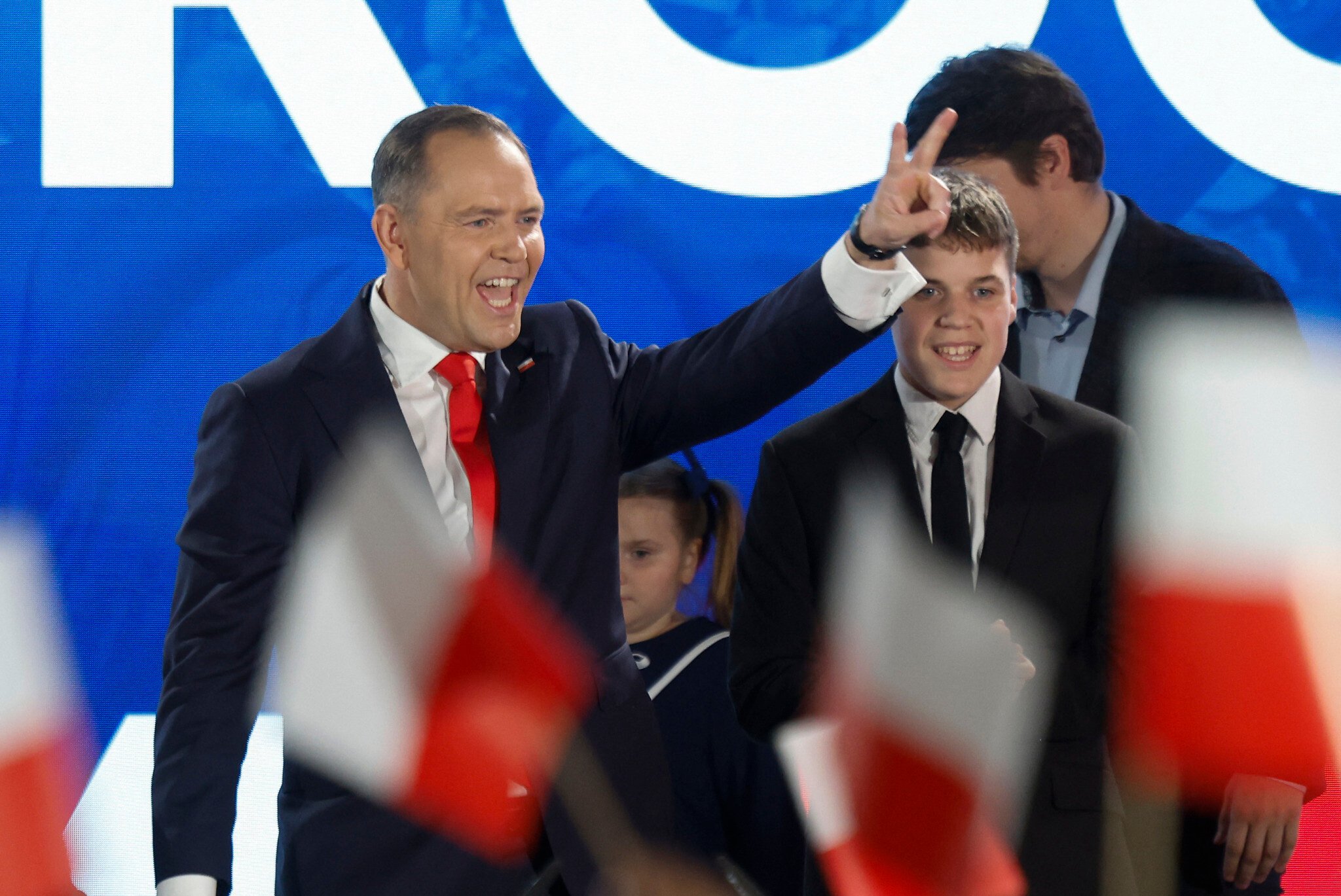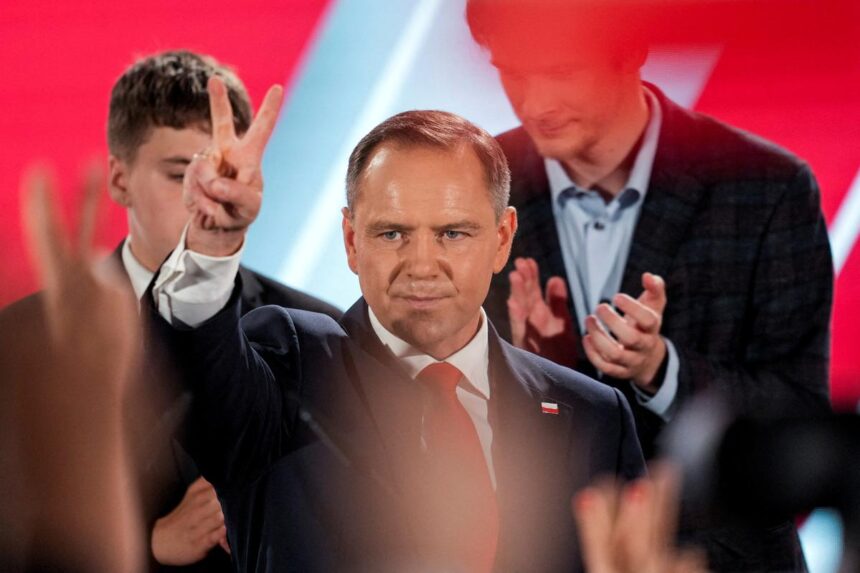Introduction
The 2025 Poland presidential election concluded with a dramatic and narrow victory for conservative historian Karol Nawrocki, who defeated Warsaw’s liberal mayor Rafal Trzaskowski. The razor-thin margin reflects a deeply divided electorate, signaling significant political shifts for Poland and its relationship with the European Union (EU).
Election Results and Political Context
According to the state electoral commission (PKW), Nawrocki secured 50.9% of the vote compared to Trzaskowski’s 49.1%. This overturned earlier exit polls that initially showed Trzaskowski leading. The final count marked a remarkable comeback for Nawrocki, who had remained cautiously optimistic throughout election night.

Nawrocki’s victory marks a continuation of Poland’s conservative trajectory. As a historian and supporter of traditional Catholic and family values, Nawrocki aligns closely with the Law and Justice party (PiS), which lost parliamentary power eighteen months ago but remains a strong opposition force. His presidency is expected to sustain tensions with the pro-EU coalition led by Prime Minister Donald Tusk.
Key Players and Political Positions
- Karol Nawrocki: A 42-year-old conservative historian, Nawrocki campaigned on national sovereignty, opposition to deeper EU integration, and traditional social values. He is known for his support of Poland’s independence within the EU framework and cautious approach toward Ukraine’s potential NATO and EU membership during the ongoing conflict with Russia.
- Rafal Trzaskowski: Warsaw’s liberal mayor and former Europe minister, Trzaskowski represents the progressive wing advocating closer ties with the EU, civil liberties expansion, and social reforms. His narrow loss underscores the urban-rural divide in Polish politics.
Implications of Nawrocki’s Presidency
Although the Polish presidency is largely ceremonial, the office holds veto power over legislation—a tool Nawrocki is likely to wield against Prime Minister Tusk’s pro-EU agenda. This dynamic will heighten political friction and complicate efforts to liberalize judiciary reforms and social policies.

Nawrocki’s win also revitalizes the conservative base, suggesting the Law and Justice party’s prospects for regaining power in the 2027 parliamentary elections remain strong. This could steer Poland toward a more nationalist and Eurosceptic stance in the coming years.
Controversies During the Campaign
Nawrocki faced scrutiny over his ownership of a second apartment acquired under contentious circumstances involving a pensioner. Critics accused him of exploiting vulnerable individuals, though he denied wrongdoing and pledged to donate the property to charity. Despite this, Nawrocki’s personal image as a disciplined and physically active candidate helped maintain voter trust.
Looking Ahead: Poland and the EU
The election reflects ongoing debate in Poland about sovereignty versus deeper integration with the EU. Nawrocki’s opposition to ceding further powers to Brussels contrasts with Trzaskowski’s vision of Poland as a leading voice in European mainstream politics.
Both candidates support continued aid to Ukraine amid Russian aggression but differ on Poland’s role in NATO and EU expansion plans.
Conclusion
The 2025 Poland presidential election showcased a nation divided yet passionate about its future direction. Karol Nawrocki’s narrow victory signals sustained conservative influence, with likely impacts on Poland’s EU relations and internal reforms. As Nawrocki assumes office, the coming years will be pivotal in shaping Poland’s political and international identity.
For more insights on Poland’s evolving political landscape, explore our analysis of Poland’s Political Future After 2025 Election.
Learn more about the European Union’s policies and Poland’s role in the EU.









